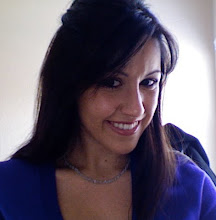You can read more about this interesting study at the Los Angeles Times website: http://latimesblogs.latimes.com/booster_shots/2008/12/gene-that-influ.html
Here is another news brief about the same study:
information about
Audiology - Ear Health - Hearing Loss - Hearing Aids - Research - Technology & More


 Japan is releasing speakers that fit inside your ear canal this August 2008. Click on the link to read about the technology on Tech-On! Victor's Earphone Makes Sound Deeper in Ear. (Image from http://techon.nikkeibp.co.jp/english/)
Japan is releasing speakers that fit inside your ear canal this August 2008. Click on the link to read about the technology on Tech-On! Victor's Earphone Makes Sound Deeper in Ear. (Image from http://techon.nikkeibp.co.jp/english/) On January 14, 2008, I prepared and presented the hearing conservation program titled, "It's How You Listen That Counts" on behalf of the House Ear Institute at South Pasadena Middle School in Pasadena, CA. The goal of the presentation was to educate approximately 1,050 students (6th-8th graders) on basic anatomy of the ear, how we ear, safe sound levels, dangers of loud noise exposure and how to protect our hearing. The presentations ranged between 25-30 minutes and included a question and answer session. The students were a great group and asked some thoughtful questions!
On January 14, 2008, I prepared and presented the hearing conservation program titled, "It's How You Listen That Counts" on behalf of the House Ear Institute at South Pasadena Middle School in Pasadena, CA. The goal of the presentation was to educate approximately 1,050 students (6th-8th graders) on basic anatomy of the ear, how we ear, safe sound levels, dangers of loud noise exposure and how to protect our hearing. The presentations ranged between 25-30 minutes and included a question and answer session. The students were a great group and asked some thoughtful questions! An interactive portion of the presentation involved the use of a sound level meter to measure the loudness level of music in decibels (unit used to measure sound intensity). To show this, an iPod was connected to an external speaker and a student volunteer read the level displayed on the sound level meter as I increased the volume of the iPod. The purpose of the demonstration was to listen to what 85 dB sounds like and also emphasize the importance of the location of the sound source in relation to your ears. The students learned that sound intensity attenuates (decreases) as distance increases and how this can help us with protecting our ears.
An interactive portion of the presentation involved the use of a sound level meter to measure the loudness level of music in decibels (unit used to measure sound intensity). To show this, an iPod was connected to an external speaker and a student volunteer read the level displayed on the sound level meter as I increased the volume of the iPod. The purpose of the demonstration was to listen to what 85 dB sounds like and also emphasize the importance of the location of the sound source in relation to your ears. The students learned that sound intensity attenuates (decreases) as distance increases and how this can help us with protecting our ears.
 AudiologyNOW!, the annual audiology convention held by the American Academy of Audiology (AAA) was at the Charlotte Convention Center in Charlotte, NC from April 2-5. This year, the convention was themed "Hear to Stay" to celebrate the 20th Anniversary of the American Academy of Audiology. With approximately 7,000 attendees, the event offered learning labs, research poster displays, technological information and the Audiology Solutions exposition.
AudiologyNOW!, the annual audiology convention held by the American Academy of Audiology (AAA) was at the Charlotte Convention Center in Charlotte, NC from April 2-5. This year, the convention was themed "Hear to Stay" to celebrate the 20th Anniversary of the American Academy of Audiology. With approximately 7,000 attendees, the event offered learning labs, research poster displays, technological information and the Audiology Solutions exposition. The expo featured products and services related to audiology including the latest developments in hearing aid technology. The expo included the following categories among many others: diagnostic instruments, hearing aid manufacturers and accessories, implantable devices, earmold/impression material, listening devices, earphones, batteries, and hearing protection. The Employment Service Center is available each year to provide an opportunity for employers and job seekers to network.
The expo featured products and services related to audiology including the latest developments in hearing aid technology. The expo included the following categories among many others: diagnostic instruments, hearing aid manufacturers and accessories, implantable devices, earmold/impression material, listening devices, earphones, batteries, and hearing protection. The Employment Service Center is available each year to provide an opportunity for employers and job seekers to network. As a first-time attendee, I enjoyed every aspect of the experience and felt I gained some valuable resources as a student. One of the highlights of the event was having an opportunity to meet audiologists, other audiology doctoral students, and professionals and individuals involved in our profession. There was a wealth of information available, such as recent research findings and interesting case studies to learn from. With all the great events and activities, it was just a matter of having enough time to experience everything.
As a first-time attendee, I enjoyed every aspect of the experience and felt I gained some valuable resources as a student. One of the highlights of the event was having an opportunity to meet audiologists, other audiology doctoral students, and professionals and individuals involved in our profession. There was a wealth of information available, such as recent research findings and interesting case studies to learn from. With all the great events and activities, it was just a matter of having enough time to experience everything.
